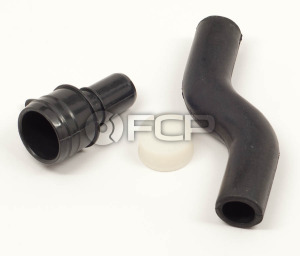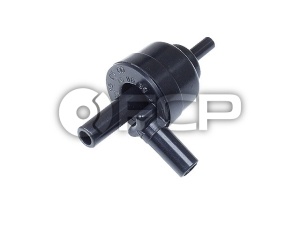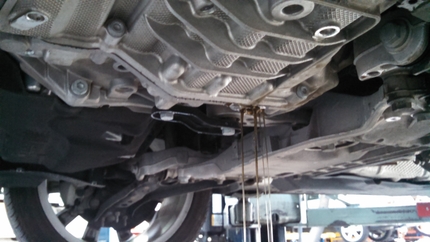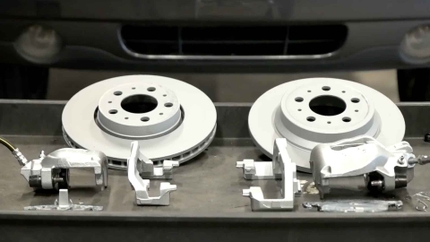Old Redblock Volvos are notorious for their PCV system clogging up. Leave it unchecked for too long, and you would experience oil leaks that you just couldn’t figure out how to solve. So what is a PCV system and why does it matter?
First off, PCV stands for Positive Crankcase Ventilation. In this world there are two types of pressure: Positive and Negative. Negative pressure occurs when you are removing a liquid or gas from an enclosed space. Positive pressure is the opposite, when additional liquid or gas is added to an enclosed space.
In an engine, we all know about what goes on in the cylinder. A fuel and air mixture is ignited, forcing the piston down. Inside the cylinder, the explosion creates a large positive pressure. This pressure forces the piston down and suddenly you have a working engine. After the power stroke is complete, the piston reverses direction into the exhaust stroke, with an exhaust valve opening and releasing the pressure.
What happens underneath the piston?
As the piston moves upwards during its exhaust or compression stroke, the air inside the crankcase also has to move with it. For the most part, this itself does not pose an issue as there is usually another piston opposing this movement of air. Imagine two syringes connected by a tube. As one syringe is pushed down, the other moves up similar to the movement of engine pistons with the tube representing the crankcase. It is simple fluid dynamics.
Wonder why your oil turns black?
In a perfect world, we would be happy and end there. But what engineers figured out long ago is the problem of blow-by. In order for a piston to slide smoothly along the cylinder walls of an engine, it uses pistons rings, essentially gaskets which seal the gap between the piston and the cylinder. Although these rings are made of metal, it is inevitable that some of the gases from the ignition of the air/fuel mixture will make their way past the piston rings into the lower crankcase. Ever wonder why your oil turns black? This is why. Also wonder why newer cars tend to have longer oil changes? Higher tolerances from modern manufacturing processes allow less blow-by.
In addition to changing the colour of your oil, this blow-by causes…you guessed it: positive crankcase pressure. If this extra pressure has nowhere to go, it will make it’s way through seals, manifesting itself in the form of oil leaks. In order to prevent this excess pressure, every engine has a Positive Crankcase Ventilation System. PCV systems operate fundamentally the same, but there are minor differences. Many cars only utilize a PCV Valve.
The PCV Valve is a one-way valve that will route excess crankcase pressure back into the intake manifold, while not allowing outside air to enter the crankcase. This valve can get clogged or cease to operate, so regular maintenance and check-ups are recommended. The valve itself is usually inserted into the lower crankcase or valve cover, connected to the intake manifold by a tube.
There is no PCV valve
In my Volvo 940 as well as a number of other older Volvos, there is no PCV Valve, just an oil trap and a flame trap. The diagram above is of the Volvo 940 PCV system. The first point of entry for a Volvo Redblock PCV system is the oil trap. As the air escaping the crankcase will be contaminated with oil and exhaust gases, this oil trap will filter the oil out from the air. This will clean the air and prevent contamination of the intake air, and related components. The oil trap leads directly to the flame trap.
The flame trap is a simple plastic or metal piece that has holes in it to allow air to pass through, but also to prevent the propagation of a flame. These holes can get clogged, causing excess crankcase pressure. In combination, they do the same job as a PCV valve, with the added benefit of no moving parts to clog up. The tube leading from the flame trap is instead routed in front of the throttle plate.
Long term
For maintenance, simply ensure these parts are not clogged by removing and inspecting them. For the oil trap, find the hose connecting it to the intake pipe and try to blow through it with your hand cupping the tube and pressing your hand to your mouth. The oil cap should be off, and while blowing, you should feel little to no restriction of flow. All of this with the engine off of course. If there is a restriction, you can start by inspecting the flame trap and then the oil trap. This test will not work with PCV Valve systems.
Overall, the PCV system is essential to a properly operating engine. If you haven’t checked it recently, its not a bad idea to make it an evening project. If you have more tips or suggestions, feel free to leave a comment below
 About the Author: Tim Wong
About the Author: Tim Wong
Tim is a Canadian from Windsor, which means he has plans to use his Volvo as an emergency space heater. He is a mechanical engineer by day and backyard mechanic by night. His mantra in life is to never break another bolt.















